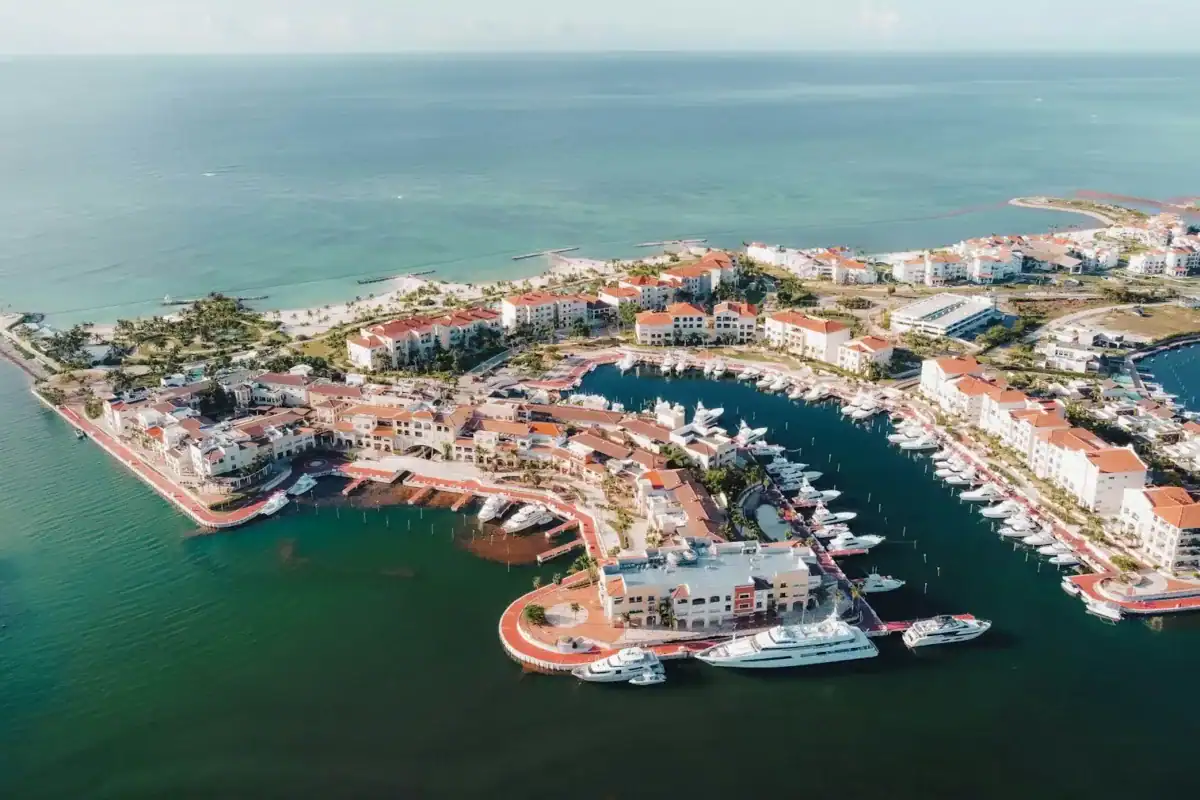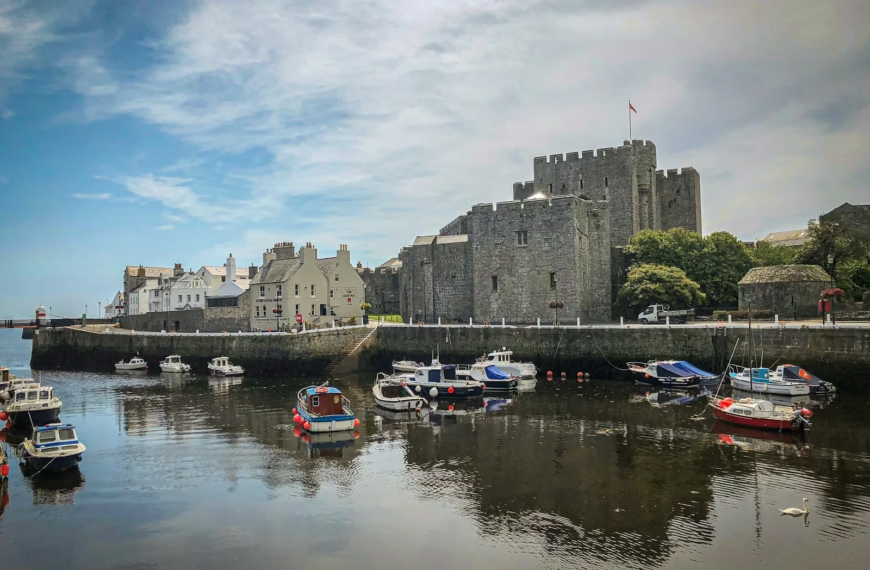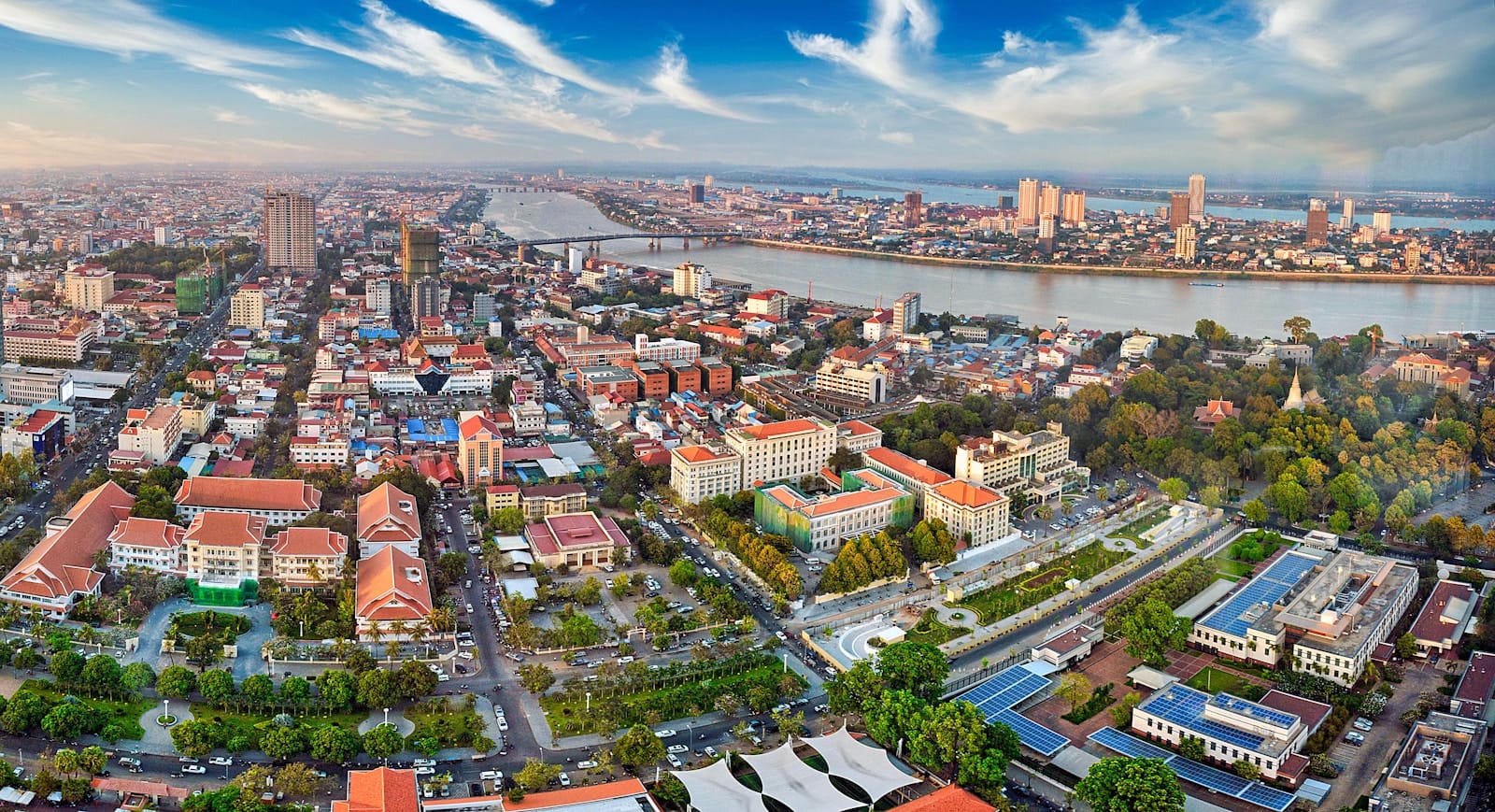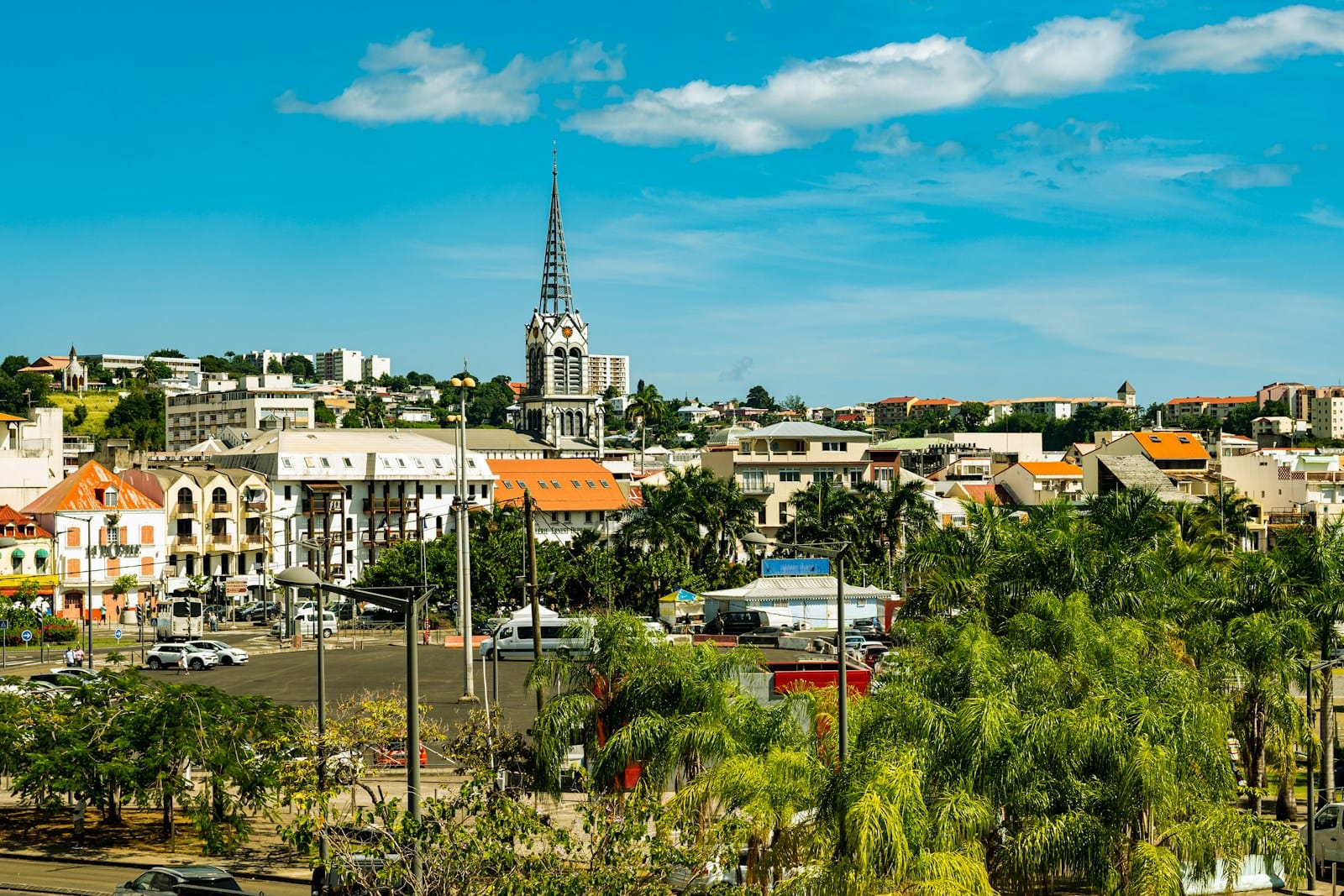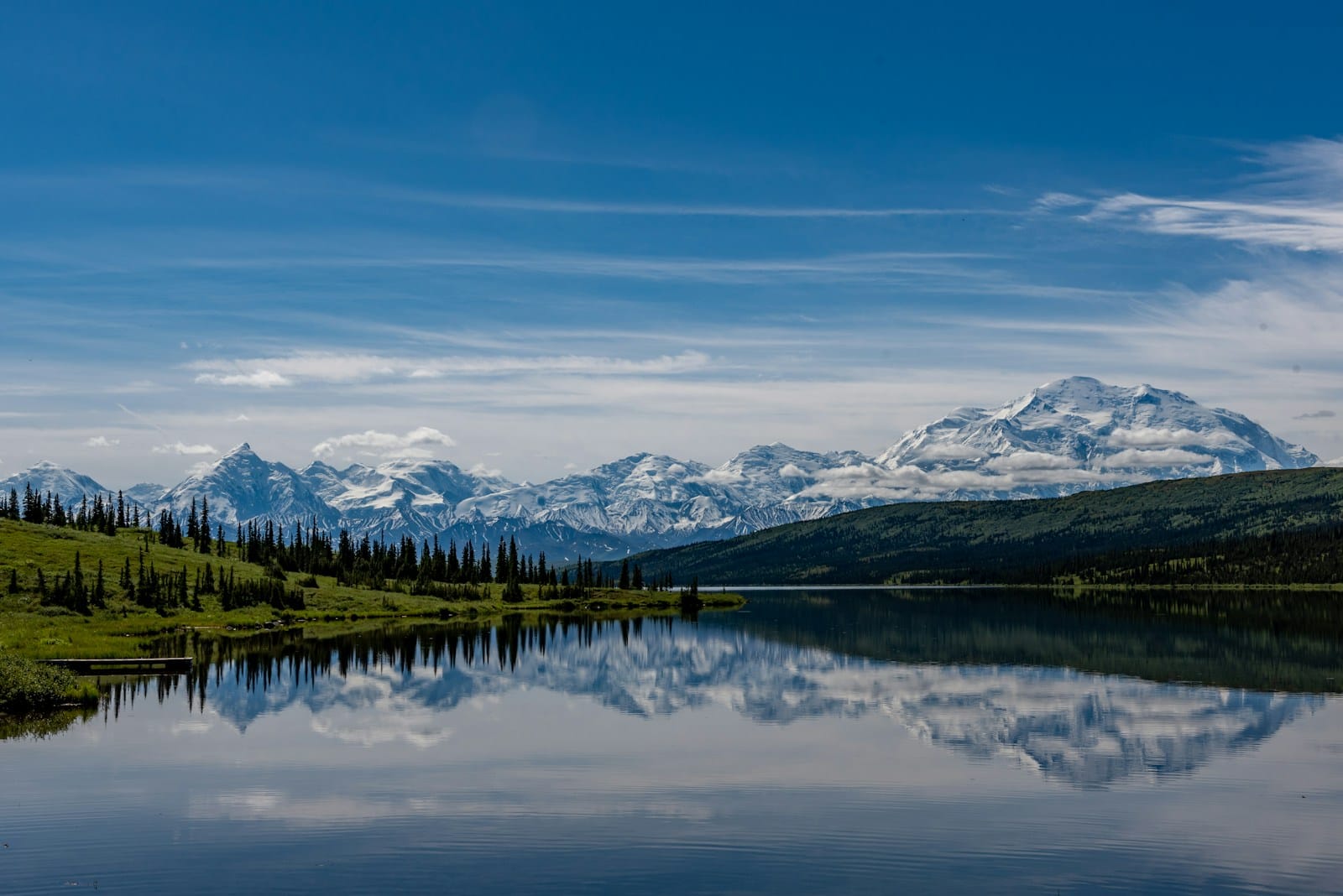Punta Cana Travel Guide – A Sun-Drenched Caribbean Escape
Intro to Punta Cana Travel Guide
Palm-fringed beaches, turquoise waters, and nonstop coastal energy make Punta Cana one of the Dominican Republic’s most magnetic destinations. From all-inclusive luxury to rustic beach bars, this sun-kissed town on the eastern tip of Hispaniola is more than just a beach resort — it’s a window into Afro-Caribbean rhythms, hidden eco-treasures, and adventures that stretch far beyond the hotel gates.
Start your journey with our Punta Cana Travel Guide and uncover all that awaits — from remote islets to rainforest ziplines and slow-cooked sancocho.
💡Quick Facts:
Continent: North America
Country: Dominican Republic
Province: La Altagracia
City: Punta Cana
Area: ~475 km² (183 mi²)
Population: ~100,000 (metro estimate)
Density: ~210 people per km²
Capital (National): Santo Domingo
Language(s): Spanish (official); English widely spoken in resorts
Currency: Dominican Peso (DOP)
Time Zone(s): GMT-4 (Atlantic Standard Time; no daylight savings)
Airport: Punta Cana International Airport (PUJ) – 10 minutes from resorts
Climate: Tropical; hot and humid year-round with wet and dry seasons
Known For: All-inclusive beach resorts, turquoise waters, golf courses, nightlife, water sports
🛂Arrival Info:
– No visa required for stays up to 30 days for most Western nationalities (US, UK, EU, Canada, etc.)
– $10 USD tourism fee typically included in airfare
– Extensions available for a fee (up to 120 days)
– Official info: DGM Dominican Republic Immigration
💉Health Info:
– Recommended: Hepatitis A & B, Typhoid, Tetanus; mosquito precautions advised
– No Yellow Fever vaccine required unless arriving from a high-risk country
– Good access to private clinics in resort zones
– Bring sunscreen, bug spray, and anti-diarrheal meds
Travel health updates — get coverage here
Stay Informed with Official Updates: World Health Organization – International Travel and Health | Centers for Disease Control and Prevention – Global Travel Health
🚨Travel Advisory:
– Petty theft can occur; exercise caution in nightlife areas and beaches
– Avoid isolated areas at night outside of resort zones
– Weather risks: hurricanes (Jun–Nov)
Stay Informed with Official Updates: US Travel Advisory | UK Foreign Travel Advice
📅Holidays:
– Independence Day – February 27
– Good Friday & Easter Monday (dates vary)
– Restoration Day – August 16
– Constitution Day – November 6
– Christmas Day – December 25
– Expect holiday surges in tourism and limited transport
💰Money Matters:
– Currency: Dominican Peso (DOP); US dollars accepted in most tourist areas
– Tipping: 10%–15% expected at restaurants; $1–$2 per bag for porters
– ATMs available at resorts and banks
– Most resorts accept credit cards
– Duty-Free: 200 cigarettes or 1 cigar box, 2 liters of alcohol per adult
✈️Airports:
– Punta Cana International Airport (PUJ) – Main entry point; well connected to North America and Europe
– Located ~10–15 minutes from major resorts
– Taxi, shuttle, and resort pickups available
🚍Transport:
– Most resorts offer private shuttles
– Taxis are unmetered — confirm fare in advance
– Ride-shares like Uber operate but may be restricted at resorts
– Avoid public “gua-guas” (local buses) unless with a guide
– Driving is possible with IDP but traffic can be erratic
📶Connectivity:
– SIM cards from Claro or Altice available at airport kiosks
– eSIMs supported for Dominican networks via Airalo or Holafly
– Wi-Fi included in most resorts; premium speed may cost extra
– Coverage strong in resort zone, weaker in rural beaches
📜Laws & Etiquette:
– Legal drinking age: 18
– Resort areas are LGBTQ+-friendly; more conservative outside cities
– Avoid topless sunbathing (not culturally accepted)
– Spanish is the official language, but English is common in service areas
– Avoid political discussions and public intoxication
🛡️Emergency Info:
– Emergency: 911 (Police, Ambulance, Fire)
– Tourist Police (CESTUR): 1-809-200-3500
– U.S. Embassy: https://do.usembassy.gov
– Travel insurance is highly recommended, especially for water sports and medical emergencies
🌦️Weather:
– Dry season: December to April – best time to visit (warm, breezy, low rain)
– Wet season: May to October – hot, humid, with tropical showers
– Hurricane season: June to November (rare direct hits but heavy rain is possible)
– Average temps: 77–88°F (25–31°C) year-round
Weather Forecast
Get to Know Punta Cana – Neighborhoods & Districts
Punta Cana isn’t one singular place — it’s a collection of beachfront zones, rural inland villages, and gated resort hubs. Here’s where to explore.
Bávaro
This is the beating heart of Punta Cana’s tourism. Bávaro Beach offers iconic white sand and endless beachfront resorts, but there’s also a lively street scene with local eateries, souvenir shops, and dance bars hidden off the main drag.
Cap Cana
Upscale and serene, Cap Cana is a gated community known for luxury resorts, the Jack Nicklaus-designed golf course at Punta Espada, and the scenic Marina Cap Cana. Perfect for those seeking quiet beaches and yacht-side dining.
El Cortecito
A walkable beach town popular with expats and independent travelers. Expect colorful homes, seafood grills, and a more local vibe compared to resort-heavy areas.
Uvero Alto
Located northwest of Bávaro, this stretch of coast is quieter and caters to boutique resorts, horseback rides along the beach, and travelers seeking tranquility and space.
Verón
Technically the local administrative center, Verón feels more urban and authentic — it’s where many resort workers live. Expect budget eats, hardware stores, and a much different pace from the beach.
Cabeza de Toro
Nestled between Bávaro and the Indigenous Eyes Ecological Park, this area is ideal for nature lovers. Boutique resorts sit along protected beaches and mangrove-filled coves.
Macao
Once considered off-the-grid, Macao is now a UNESCO-recognized zone for sustainable tourism. Its surf-friendly beach, palm groves, and new eco-resorts are putting it on every adventurer’s radar.
Where to Stay in Punta Cana
For first-timers, Bávaro offers central access to everything. Cap Cana suits luxury travelers, while El Cortecito and Macao cater to culture-seekers and nature lovers.
Top Attractions & Iconic Sights
Beyond the beach, Punta Cana boasts a surprising number of cultural icons, family favorites, and scenic landmarks. Here’s what to see.
Skyline Views and Icons
- Macao Beach
Famous for its undeveloped feel and crashing waves, Macao is a must for both surfers and sunrise chasers. The cliffs on the north side make for striking coastal photography. - Hoyo Azul
A shimmering freshwater cenote hidden at the base of a cliff. Found within Scape Park at Cap Cana, the sapphire pool invites cliff jumps and refreshing swims. - Montaña Redonda
Just outside Punta Cana, this “round mountain” offers 360-degree views of the sea, jungle, and rice paddies. Swing from the sky for the ultimate Instagram shot.
Local Tip: Hire a local guide in Miches to get there early for sunrise. Fog drifts across the valley for a magical effect.
Museums and Cultural Gems
- ChocoMuseo Punta Cana
Learn about cacao’s journey from bean to bar and make your own chocolate souvenirs. Great rainy-day activity for all ages. - Altos de Chavón
Technically near La Romana, this re-creation of a Mediterranean-style village features cobbled lanes, artisan shops, and an open-air amphitheater hosting concerts and events.
Family Favorites
- Manatí Park
A theme park with parrots, dolphins, and folkloric shows. It’s a mix of wildlife exhibits and cultural performances geared toward kids. - Dolphin Explorer
Offers interactive marine experiences, including swimming with dolphins, sea lions, and even nurse sharks in a controlled lagoon. - Bavaro Adventure Park
Zipline courses, dune buggy trails, and paintball arenas — all in a sprawling outdoor park. Safe and fun for teens and thrill-seeking families.
Natural Escapes Within and Near Punta Cana
The Dominican Republic is one of the most biodiverse countries in the Caribbean. Punta Cana offers unique green spaces, wetlands, and eco-reserves you can explore without straying far from your hotel.
- Indigenous Eyes Ecological Reserve
A 1,500-acre private reserve managed by the Punta Cana Foundation. Follow jungle trails to 12 natural lagoons (five swimmable), with birdlife and medicinal plants all around. - Laguna Bávaro Wildlife Refuge
Home to turtles, manatees, and tropical birds, this quiet wetland zone near Cabeza de Toro is an excellent spot for kayaking and guided eco-walks. - Scape Park at Cap Cana
A commercial but well-maintained nature park featuring waterfalls, caves, cenotes, and ziplining. Great for active visitors who want a safe intro to wild DR terrain. - Playa Blanca
Calm, shallow waters and soft sand make this a favorite for paddleboarders and families. Access is often through resorts, but local bars nearby offer public options.
Punta Cana Day Trip Ideas
Looking to escape the hotel zone for a day? These excursions let you experience Dominican nature beyond the beach.
- Saona Island
Depart from Bayahibe (1.5 hrs drive), then take a catamaran or speedboat to this postcard-perfect island with palm-lined beaches and shallow turquoise waters. Tours include snorkeling and lunch. - Los Haitises National Park
Located in Samaná Bay (2–3 hrs with transfer), this park is a labyrinth of limestone karsts, caves with Taíno petroglyphs, and mangrove canals. Worth a full-day eco-adventure. - El Limón Waterfall
Combine this with a Samaná excursion. Ride on horseback or hike through lush jungle to reach this 50-meter cascade and swim beneath its powerful plunge. - Montaña Redonda
Easier than it looks — you can reach the summit by 4×4 or hike for about 40 minutes. Bring water and a camera.
Culture, History and Local Identity
Punta Cana’s identity is shaped by Afro-Caribbean traditions, Indigenous Taíno roots, colonial Spanish influence, and a deeply musical soul.
- Basilica Catedral Nuestra Señora de la Altagracia (Higüey)
This stunning modern cathedral, about 45 minutes from Punta Cana, is a Dominican national symbol. Thousands of pilgrims visit each January 21 for the Feast of Our Lady of Altagracia. - Altos de Chavón (near La Romana)
This 16th-century-style replica village is more than a photo op — it hosts galleries, a design school, and open-air concerts. It celebrates both Mediterranean aesthetics and local craftsmanship. - Macao Surf Camp
Beyond the waves, this surf school also introduces you to Dominican coastal life — from beach cooking to local surf culture with a Caribbean twist. - Cultural Walking Tours
Take a half-day guided tour through Verón or Higüey to learn about Dominican daily life, traditional cooking, and market customs — often skipped by resort-goers.
Local Tip: Listen for bachata and dembow from passing motoconchos. Music is everywhere — and locals often sing along.
Local Food, Markets and Artisan Vibes
Taste your way through Punta Cana and uncover a fusion of Dominican staples, fresh seafood, and beachside indulgences.
- Must-Try Dishes
Sancocho is the heart of Dominican comfort food — a stew of root vegetables and meats. Also try mofongo (mashed plantains), fried red snapper, and tostones with garlic. Street food fans should hunt for empanadas and pastelitos stuffed with meat or cheese. - Captain Cook Restaurant (El Cortecito)
A seafood institution steps from the beach. Pick your fish fresh and enjoy it grilled with garlic and lime. - La Yola (Cap Cana)
Perched over the water near the marina, La Yola serves upscale seafood with Caribbean-Asian fusion — don’t miss the coconut flan. - Delicias de Bávaro
Affordable, delicious Dominican food in a no-frills setting. Great for trying chicharrón, rice with pigeon peas, and local juices. - Plaza Bibijagua
An artisan market along Bávaro Beach where you’ll find hand-carved woodwork, larimar stone jewelry, and vibrant paintings. Friendly bartering is common.
Explore delicious things to do in Punta Cana by joining a local food tour or rum-tasting experience — many include hotel pickup.
Discover top-rated Punta Cana tours and experiences, and explore the best things to do in Punta Cana — from beach escapes and cenote dives to rainforest ziplines and island day trips. Book early for exclusive access and flexible cancellation.
Events, Nightlife and Seasonal Fun
Whether it’s dancing under the stars or celebrating cultural festivals, Punta Cana offers year-round reasons to visit.
Carnaval de Punta Cana (March)
Held at Boulevard 1ro de Noviembre, this lively event features floats, masks, and music parades celebrating Dominican folklore.
Dominican Independence Day (Feb 27)
Expect parades, flag displays, and music throughout town — especially in Verón and Higüey.
Electric Paradise (December)
An international music festival blending EDM, art installations, and beachfront partying.
Nightlife Districts
Bávaro is the nightlife capital, with beachfront clubs like Coco Bongo (part show, part party) and Imagine Punta Cana — housed inside a cave. Cap Cana offers upscale lounges, while El Cortecito leans local and casual.
- Spring
Perfect beach weather, spring break crowds, and outdoor festivals. - Summer
Hot and humid, but great for water activities and nightlife. Expect brief afternoon storms. - Fall
Quieter, with lower hotel prices. Good for museums, food, and couples’ retreats. - Winter
High season for sunseekers. December to February is breezy, mild, and ideal for holiday travel.
Which Airport Should You Use?
Flying into Punta Cana is surprisingly flexible depending on your route.
- Flying internationally → PUJ (Punta Cana International Airport)
This is the Caribbean’s best-connected leisure airport, with direct flights from the U.S., Canada, Europe, and South America. It’s 10–25 minutes from most resorts. - Regional travel or beach focus → La Romana International Airport (LRM)
Good for travelers combining Punta Cana with La Romana or Bayahibe. About 1.5 hours by car. - Historic inland access → Santo Domingo (SDQ)
If you’re also exploring the capital or interior regions, SDQ offers a cultural counterbalance. It’s ~2.5 hours away.
Getting Around Punta Cana – Transport Tips
While resort shuttles dominate, there’s more mobility here than most realize.
- Walkability
Areas like El Cortecito and Cap Cana Marina are walkable, but major resort zones are car-dependent. Sidewalks exist but are inconsistent. - Taxis and Transfers
Taxis don’t use meters; always agree on the fare. Private shuttles or pre-arranged transfers are best for reliability. - Motoconchos
Motorbike taxis are common and cheap but not always safe for tourists. Use with caution. - Public Transit
Local guaguas (minibuses) connect Verón, Bávaro, and Higüey. Very budget-friendly, but language skills help.
Apps
– Uber works in Punta Cana but isn’t universally available
– Rome2Rio for trip planning
– Maps.me with offline maps
Local Tip: Dominicans often share taxis or hitch short rides — it’s normal to greet fellow passengers like friends.
Best Time to Visit Punta Cana
- Spring (March–May)
Warm and dry (mid-80s°F), with moderate crowds. Mid-range prices and excellent for snorkeling and spring festivals. - Summer (June–August)
Hot and humid (high 80s°F). Higher tourist volume and mid-high costs. Best for nightlife and island hopping. - Fall (September–November)
Warm with a chance of storms. Fewer crowds, budget-friendly. Ideal for couples, surfers, and slow travel. - Winter (December–February)
Mild and breezy (low 80s°F). Peak season with high prices. Great for family holidays and escaping northern winters.
Photographers will love fall sunsets and spring’s floral bloom. Hurricane season (Aug–Oct) brings deals, but monitor forecasts.
Punta Cana Travel Essentials – Key Insights
- SIM/Data
eSIMs are available via Airalo or Holafly. You can also get local prepaid SIMs from Claro or Altice stores, both of which offer strong coverage in most resort and urban areas. - Transit Costs
Local buses (guaguas) are incredibly affordable, usually under $1 per ride. Shuttle transfers between airport and resorts range from $20–$40. Taxi fares are negotiable and should always be agreed upon in advance. - Entry Points
Most travelers arrive via Punta Cana International Airport (PUJ), located 10–25 minutes from most resort zones. Regional buses also run to Punta Cana from Santo Domingo and Higüey. - Local Vibe
The atmosphere is relaxed and welcoming, with a strong service culture. Punta Cana blends beach energy with local rhythms and a strong sense of hospitality. - Walkability
Walkability varies by zone. Resort properties are typically walkable within their gates, but public areas outside are limited in pedestrian infrastructure. El Cortecito and parts of Cap Cana Marina are exceptions.
Quick Picks List
- Best for food: El Cortecito
- Best for beach/sunset: Macao Beach
- Best for nightlife: Bávaro clubs and Imagine cave bar
- Best for family fun: Bavaro Adventure Park
- Best for slow travel: Macao and Uvero Alto
Get off the beach lounger and discover where Punta Cana locals unwind.
El Pola Market (Verón)
A small supermarket and market mix where locals shop for produce, Dominican spices, and daily essentials. Good for cultural immersion.
Bavaro’s Sunday Baseball Games
Catch a community baseball match at a local field — the DR’s passion comes alive here. Just ask around on Sunday mornings.
Don Queco Cigar Bar
One of the best places to sip Dominican rum and watch cigars being hand-rolled in a relaxed setting.
Macao’s Fishing Village
Visit in the early morning to watch local fishermen bring in their catch. Small shacks nearby grill the fish — fresh, unfiltered, and unforgettable.
Secret Cenotes in Uvero Alto
Locals speak of hidden freshwater pools near rural trails — access can require a guide, but it’s worth the trek.
Nearby Destinations to Explore
Planning to expand your Caribbean adventure? Consider these nearby things to do highlights:
- Santo Domingo
Colonial capital with vibrant markets, museums, and nightlife. - La Romana
Easy to combine with Punta Cana — features Altos de Chavón and luxury resorts. - Samaná Peninsula
Whale watching, waterfalls, and some of the DR’s most dramatic nature. - Puerto Plata
Historic coastal city with cable cars, surf towns, and colorful streets.
Final Tips for a Smart Punta Cana Adventure
- Book your airport transfers ahead for better pricing and reliability
- Carry both USD and Dominican pesos for flexibility
- Don’t flush toilet paper — use the bin provided
- Pack reef-safe sunscreen — it’s required in some marine areas
- Tipping is expected in service — 10% is customary
- Bring water shoes for rocky shorelines or cenote visits
- Always negotiate prices in open-air markets
- Download Spanish basics offline or use Google Translate for ease
Explore Punta Cana tours and things to do in Punta Cana to make the most of your time.
For more expert travel strategies, insider tips, and unforgettable destinations, visit our Homepage and start planning today.

